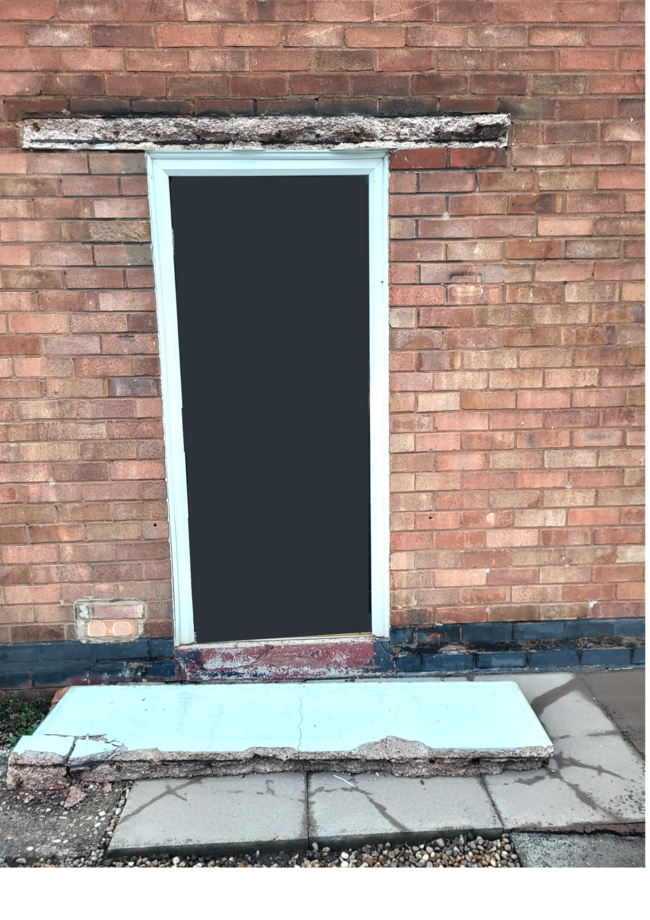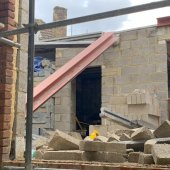CROSS UK Report 1344: Safety warning follows concrete canopy collapse

A tenant recently reported collapse of their precast concrete canopy over the front door of their house, prompting safety report 1344 from CROSS UK.
The canopy (pictured above), was a cantilever and monolithic with the lintel. The residents heard the canopy collapse while they were at home but thankfully nobody was injured.
The tenant, who has lived in the house for around 15 years, had complained to the local authority, their landlord, on numerous occasions about their concerns over cracked lintels, and cracks in internal walls and ceilings.
The landlord’s representative attended the site and indicated that the house was safe. They said the collapse of a canopy had never happened at any of their other properties, and they would provide a Glass Reinforced Plastic (GRP) canopy replacement.
A warning to others
The reporter contacted CROSS after reading previous reports on canopy collapses and wished to warn others of the potential risks.
"The images are disturbing, and the collapse could have led to a serious injury or a fatality," said CROSS UK. "They show the main reinforcement lower than it should be and its position is variable along its length; poor manufacturing control is likely to be a significant contributing factor. The root of the cantilever is particularly vulnerable as it is where the concrete is most likely to crack and is often where water gathers.
"Furthermore, the canopy waterproofing does not appear to be well bonded to the wall allowing water to enter the top surface of the concrete contributing to the corrosion of the reinforcement. A flashing detail, if present, might have inhibited water from entering."
The extent of corrosion to the reinforcement suggests that the concrete was either fully carbonated or contained chlorides. However, any cracking or visible signs of corrosion on the soffit are challenging to determine from the images, as these may have been concealed by paint at some stage.
What can CABE members learn from this?
CROSS said that following the landlord's representatives inspection, an immediate inspection of all similar properties should have been initiated, accompanied by repairs or replacements, to prevent a similar incident from occurring elsewhere. It warned that a key criticism in the Grenfell Inquiry Report was that the tenant management organisation frequently disregarded tenants’ concerns.
"Photographs of the other lintels indicate a broader degradation issue in the design, suggesting the canopy failure was not an isolated case. The condition of these structures demands further investigation," it added.
The report emphasises that critical structural elements may harbour defects that remain hidden for years until they deteriorate to a point of failure. Routine inspections and maintenance of all structures are essential, and any evidence of cracking or corrosion must be thoroughly examined.
Read next: With the structural safety of ageing buildings under the spotlight, we look at how responsible stewardship is at the top of engineers’ agenda.





